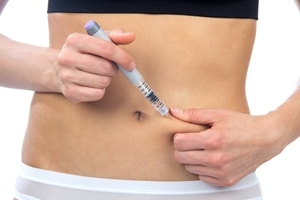Diabetes has reached an all-time high in the U.S., according to new research that those on travel nursing jobs should share with their patients. The percentage of Americans with the blood-sugar disease has nearly doubled since 1988, with at least 21 million adults living with diagnosed diabetes.
For the new study, researchers from Johns Hopkins Bloomberg School of Public Health (JHBSPH) gathered data from the National Health and Nutrition Examination Survey. The survey followed more than 43,000 adults from 1988 to 1994, and again from 1999 to 2010. Results were published in the April 15 issue of the Annals of Internal Medicine.
In the first time period, the rate of diagnosed diabetes was 5.5 percent, in comparison with 7.6 percent in the 1999 to 2004 survey. By the final batch, done from 2005 to 2010, the prevalence of diabetes rose to 9.3 percent.
"Diabetes has increased dramatically," Dr. Elizabeth Selvin, the study's lead author and an associate professor of epidemiology at JHBSPH, told Health Day. "The rates have almost doubled since the late '80s and early '90s."
The increase in diabetes directly correlates with the rise in obesity over the last several decades. In the first survey, almost 44 percent of diabetics were obese. That number spiked to about 61 percent in the most recent survey.
"This study also highlights that the increase in diabetes really tracks closely with the epidemic of obesity," Selvin told the source. "The diabetes epidemic is really a direct consequence of the rise in obesity."
Controlling diabetes
If you have reason to believe that your patients may be vulnerable to diabetes, it might be a good idea to pass along information about the disease. There are two forms of diabetes: Type 1 and Type 2. Type 1 typically affects children and young adults, and only 5 percent of the people with diabetes have this form of the disease. In this condition, the body does not produce insulin, which is a hormone needed to convert sugar, starches and other food into energy for daily life. With the help of insulin therapy along with other treatments, travel nurse professionals can help young children learn to manage their condition and live rich, healthy lives.
Type 2 is the most common form of diabetes. For people living with Type 2, either the body does not produce enough insulin or the cells ignore insulin. When glucose accumulates in the blood rather than entering cells, it can cause health problems. More immediately, your cells may be starved for energy and high blood glucose can hurt the kidneys, nerves, eyes or heart over time.
Who is at risk?
Some people are more at risk for developing Type 2 diabetes than others. Research shows that Africans-Americans, Native Americans, Asian Americans, Latinos as well as the senior population are a greater likelihood for getting this blood glucose disease.
Overall blood sugar control has improved among whites, but not among minorities, the research found. Healthcare staffing professionals can help raise awareness to targeted minority communities.
Preventing diabetes
Eating healthy and exercising are two of the most important things you can do to reduce your risk for Type 2 diabetes. The Centers for Disease Control and Prevention advises that adults need at least 2.5 hours of aerobic intensity and muscle-strengthening exercises each week.
Dr. Martin Abrahamson, senior vice president for medical affairs at the Joslin Diabetes Center and co-author of an accompanying editorial in the same issue of the journal, told Health Day that much has to be done to reverse the trend.
"So, how do you get people to embrace lifestyle changes?" Abrahamson questioned. "It's really going to take a multi-pronged effort that requires private and public institutions to really come together and develop a strategy to advance the message to live a healthy life. We also need to engage health-care professionals in doing a better job in counseling the benefits of lifestyle changes."
For the travel nurse, this study is a wake-up call to help give patients information and raise awareness of the diabetes epidemic.

